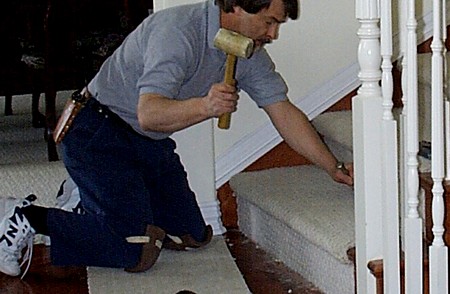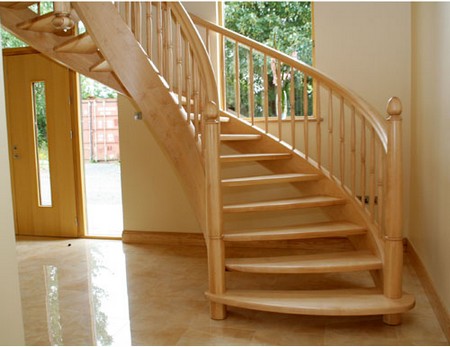Hints for Seniors stair lift installation service is offering COVID-19 safe estimates in response to the recent pandemic, they are working hard to keep their customers safe.
If you are carpeting stairs there may be some repairs which need doing first The three most common faults with stairs are creaking (caused by the supporting timbers working loose), worn ‘nosings’ – that is the front edge of each step losing its perfectly rounded shape – and loose balusters and handrails.
CURING STAIR CREAKS
Creaking stairs can be caused by a number of different faults. A common cause is loose wedges. These are fitted on the underneath of the stair between the ‘strings’ of the stair (the two large pieces of wood up the side) and the individual ‘risers’ (vertical parts of the staircase) and ‘treads’ (horizontal components of the staircase). These wedges should be glued firmly in position, but they may have shrunk and the glue failed. Normally the solution is to remove the wedges, clean off the glue, apply new adhesive and hammer them back in position. Sometimes, the wedges may need reshaping to fit into position correctly.
Another cause can be loose or missing glue blocks which are fitted into the angle between each tread and riser on the underneath side of the staircase. To repair these simply clean off the old glue, apply new glue and replace the blocks. If they are missing, nail and glue quadrant moulding into place instead.
If there is still movement between a tread and a riser (which will cause a creak), there are two ways to prevent it. One is to put screws in from underneath, securing each tread to its corresponding riser. The other solution (useful where access to the underside of the stairs is limited) is to glue quadrant beading in from the top of the stair.
CURING WORN NOSINGS
The rounded front edge of the stair receives a lot of punishment and is usually the first area to go. The answer is to cut out the worn section, fashion a new section from a suitable piece of timber and screw and glue it into place. It would be worth looking at the size and shape of rounded mouldings available from your local timber merchants/do-it-yourself store to see if any match the existing stair nosings. Hand shaping them from a solid piece of wood is time-consuming and requires a degree of skill.
If the treads of the stairs themselves have worn, giving a noticeably curved appearance, apply a flexible wood filler to these to make them flat again.
LOOSE HANDRAILS AND BALUSTERS
Repairing loose handrails and balusters is ideally carried out at the same time as other remedial staircase repairs. Small cracks in handrails can be cured by squeezing in a small amount of glue and clamping the two parts while the glue sets. Larger cracks or gaps may mean dismantling the stair rail and inserting dowels between the two halves, gluing and clamping the two parts together until the glue sets.

Loose balusters can usually be secured by hammering a nail at an angle in through the top of the baluster and into the handrail. To secure the bottom, insert a screw into the baluster through the side rail. If the baluster itself has split, a repair can usually be made with glue, clamping the two halves together (or holding them with tightly wound string) while the glue sets.
